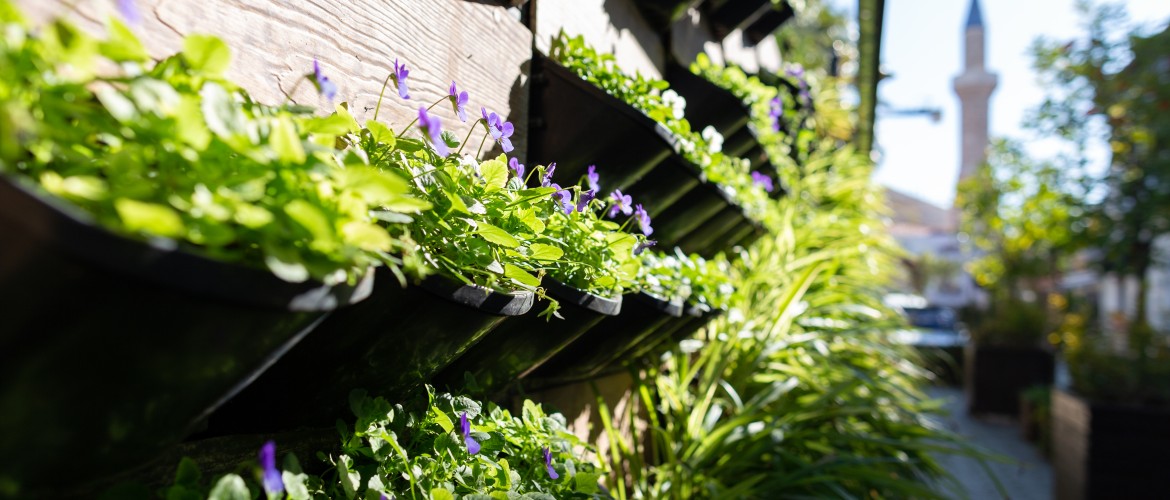|
Berlin’s main challenge is to decouple its growth from negative impacts on climate and the environment. In this respect, maintaining and/or increasing connectivity of green infrastructures in the city is seen as a major challenge, due to increasing demand for building land. Protecting and transforming vacant city areas into green spaces are a response to new challenges for the design of green areas:
This case study reflects environmental learning in public-access community gardens in Berlin, representing public green spaces that are collectively managed by civil society groups and individuals. This bottom-up initiative for temporary use of vacant urban space for community gardening started in 2009 and aims to create a community around urban gardening and food production. It is located in the densely urbanised area of the district of Kreuzberg. The concept is based on temporary use of areas awaiting new occupancy, so only removable containers are used for gardening. The lease is periodically renewed by the city administration. The food produced is used for the garden’s own café/restaurant (“Prinzessinnengarten”). Bottom-up citizens’ initiatives have helped to create important green infrastructure, influencing and transforming public policies. Public policies have to a certain extent tolerated and sometimes integrated these bottom-up activities into mainstream policies (e.g. leasehold contract for the Prinzessinnengarten). More information: Prinzessinnengarten Berlin between Pioneer Use and Land Grabbing (pdf) |



